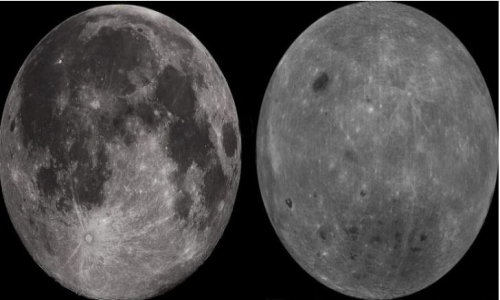


 4:44:49
4:44:49  2019-08-07
2019-08-07  943
943

Breakthrough research showcases an innovative imaging technique that uses ultrasound to provide in depth images in a noninvasive way.
Endoscopy is currently one of the most common methods for medical imaging. Its uses include diagnosing conditions that affect the lungs, the colon, the throat, and the gastrointestinal tract.
During an endoscopy, medical professionals insert an endoscope — a long, thin tube with a strong light and a small camera at the end — into a small opening, such as the mouth or a tiny incision that a surgeon makes.
Endoscopies are an invasive procedure, albeit minimally so. They can create discomfort and are not without risks. Potential side effects of endoscopies include oversedation, cramps, persistent pain, or even tissue perforation and minor internal bleeding.
Now, an innovative discovery may put an end to endoscopy altogether. Maysam Chamanzar, an assistant professor of electrical and computer engineering at Carnegie Mellon University in Pittsburgh, Pennsylvania, and Matteo Giuseppe Scopelliti, a doctoral researcher in the same department, have devised a noninvasive ultrasound imaging technique that promises to replace the endoscope.
The researchers detail their novel technique in the journal Light: Science and Applications.
Replacing the physical lens with a virtual one
Chamanzar and Scopelliti explain in their paper that biological tissue, being a turbid (or dense and opaque) medium, limits the possibilities of optical methods.
Specifically, the tissue is made of large particles and membranes and restricts the depth and resolution of optical imagery, "especially in the visible and near infrared range of the spectrum."
The new technique, however, uses ultrasound to devise a "virtual lens" in the body instead of inserting a physical one. The operator can then adjust the lens by "changing the ultrasonic pressure waves inside the medium," write the authors, and so take in depth images that were never accessible before, using noninvasive means.
Ultrasound waves can compress or rarefy the medium that they penetrate. Light travels more slowly through compressed media, and more quickly in rarefied media.
The authors explain that they were able to create the virtual lens by using this compression/rarefaction effect:
"As the ultrasonic waves propagate through the medium, they modulate its density and hence its local refractive index; the medium is compressed in the high pressure regions, resulting in a higher density, while it is rarefied in the negative pressure areas where the local density is reduced."
"As a result," they write, "the pressure standing wave creates a local refractive index contrast."
Moreover, adjusting or reconfiguring the ultrasound waves from the outside can move the lens around inside the medium, allowing it to travel to different regions and take images at different depths.
"We used ultrasound waves to sculpt a virtual optical relay lens within a given target medium, which, for example, can be biological tissue," says Chamanzar. "Therefore, the tissue is turned into a lens that helps us capture and relay the images of deeper structures."
The researcher further explains how the technique works and why it is a progressive step for visualizing inside the body.
"What distinguishes our work from conventional acousto-optic methods is that we are using the target medium itself, which can be biological tissue, to affect light as it propagates through the medium," continues Chamanzar. "This in situ interaction provides opportunities to counterbalance the [obstacles] that disturb the trajectory of light."
Technique to 'revolutionize medical imaging'
Some of the applications of the new technique include brain imaging, diagnosing skin conditions, and identifying tumors in various organs. The method could involve a handheld device or skin patch, depending on the area that needs monitoring.
By simply applying it on the surface of the skin, healthcare professionals could obtain images of internal organs without the potential side effects and unpleasantness of an endoscopy.
"Being able to relay images from organs, such as the brain, without the need to insert physical optical components will provide an important alternative to implanting invasive endoscopes in the body." Maysam Chamanzar
"This method can revolutionize the field of biomedical imaging," he adds.
"Turbid media have always been considered obstacles for optical imaging," adds co-author Scopelliti. "But we have shown that such media can be converted to allies to help light reach the desired target."
"When we activate ultrasound with the proper pattern, the turbid medium becomes immediately transparent. It is exciting to think about the potential impact of this method on a wide range of fields from biomedical applications to computer vision."
Reality Of Islam |
|

The process

Astronomers

Cosmologist

Scientists
 9:3:43
9:3:43
 2018-11-05
2018-11-05
10 benefits of Marriage in Islam
 7:5:22
7:5:22
 2019-04-08
2019-04-08
benefits of reciting surat yunus, hud &
 9:45:7
9:45:7
 2018-12-24
2018-12-24
advantages & disadvantages of divorce
 11:35:12
11:35:12
 2018-06-10
2018-06-10
 6:0:51
6:0:51
 2018-10-16
2018-10-16
 8:39:51
8:39:51
 2022-09-23
2022-09-23
 11:2:27
11:2:27
 2022-10-06
2022-10-06
 8:30:23
8:30:23
 2022-03-03
2022-03-03
 5:57:34
5:57:34
 2023-03-18
2023-03-18
 10:35:40
10:35:40
 2022-05-26
2022-05-26
 2:2:13
2:2:13
 2022-10-08
2022-10-08
 9:39:36
9:39:36
 2022-12-28
2022-12-28
 5:41:46
5:41:46
 2023-03-18
2023-03-18
| LATEST |